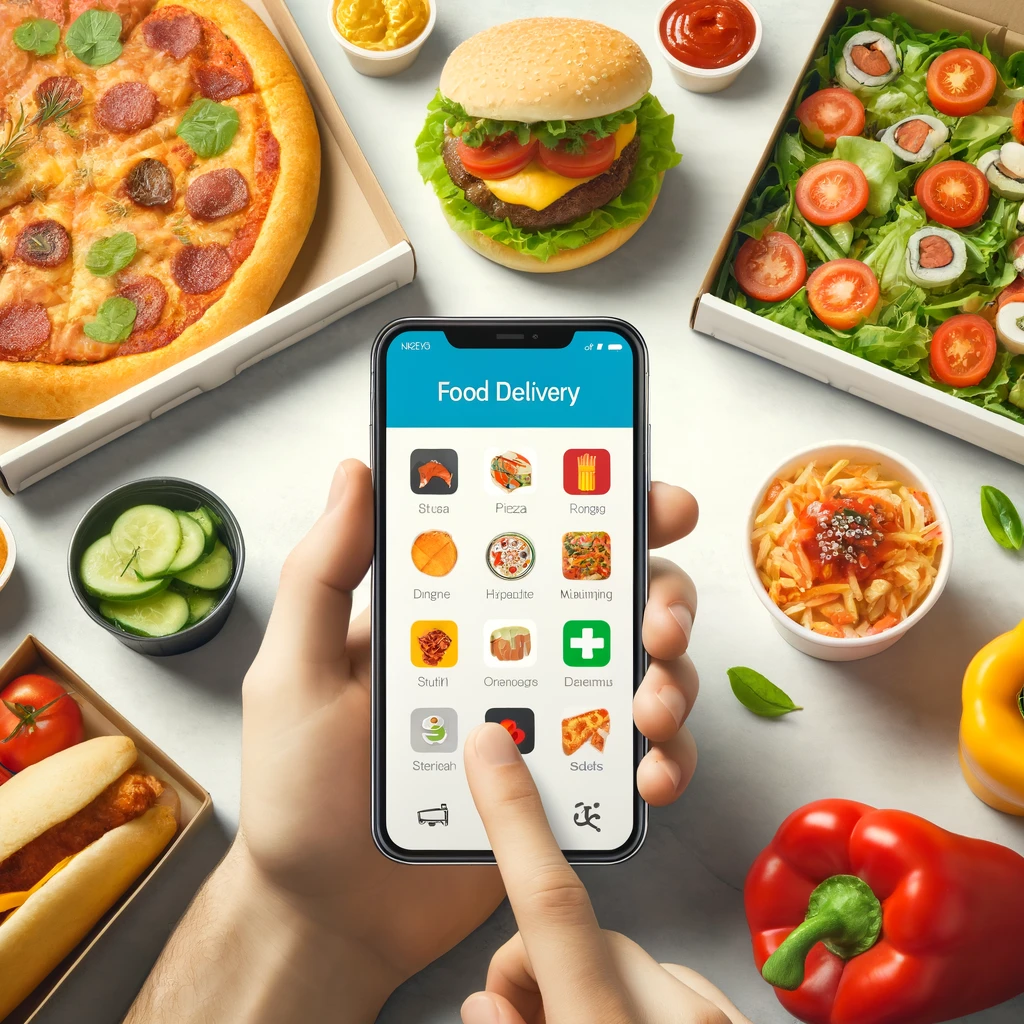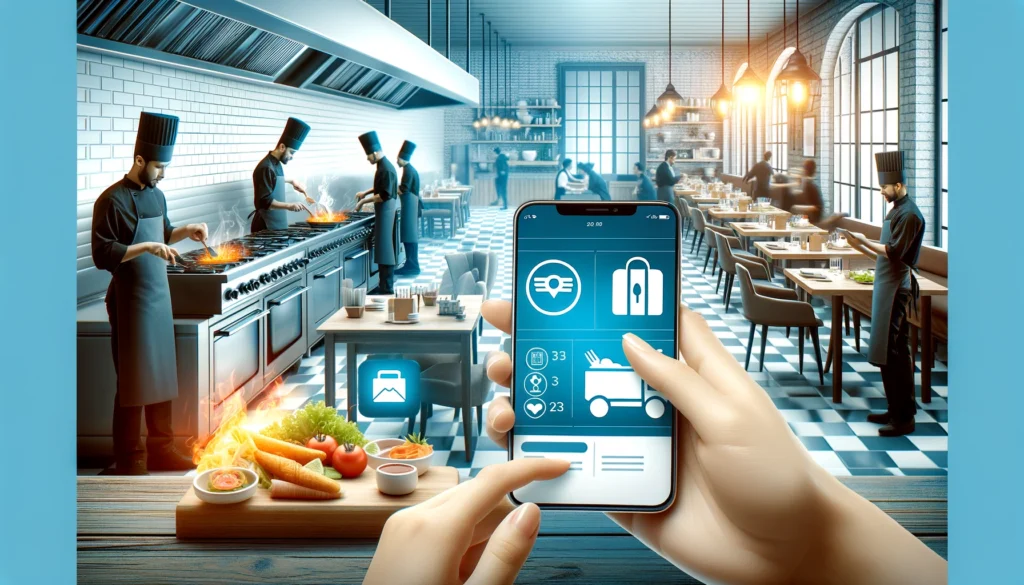In today’s fast-paced world, convenience is key, and food delivery apps have become a modern-day solution to satisfy our cravings. Whether you’re too busy to cook, craving something specific, or simply want to enjoy a meal from your favorite restaurant in the comfort of your home, food delivery apps have revolutionized the way we think about dining. This article will explore the evolution of food delivery apps, their impact on the restaurant industry and consumer behavior, the key players in the market, and what the future holds for this booming industry.
The Evolution of Food Delivery Apps
Early Days of Food Delivery
The concept of food delivery is not new. For decades, pizza and Chinese food delivery have been staples in many households. However, these services were limited in scope and primarily operated via phone orders. The customer experience was often inconsistent, with long wait times and limited payment options.
The Digital Revolution
The advent of smartphones and the proliferation of mobile apps transformed the food delivery landscape. With the introduction of GPS technology, real-time tracking, and user-friendly interfaces, food delivery apps have made it easier than ever to order food from a wide range of restaurants.
Rise of Third-Party Delivery Services
Companies like Grubhub, Uber Eats, and DoorDash pioneered the third-party delivery model. These platforms partner with restaurants to offer delivery services, allowing customers to browse menus, place orders, and track their deliveries in real-time. This model has expanded the variety of available cuisines and restaurants, providing consumers with more choices.
Key Players in the Food Delivery Market
Several companies dominate the food delivery app market, each offering unique features and services. Here are some of the key players:
1. Uber Eats
Overview: Uber Eats, an extension of the ride-hailing giant Uber, is one of the most popular food delivery apps globally. It operates in hundreds of cities and partners with a vast network of restaurants.
Key Features:
- Real-Time Tracking: Track your order from preparation to delivery.
- Scheduled Deliveries: Schedule orders in advance for later delivery.
- User-Friendly Interface: Easy-to-navigate app with curated restaurant recommendations.
- Subscription Service: Uber Eats Pass offers free delivery and discounts for a monthly fee.
Impact: Uber Eats has expanded the reach of many restaurants, providing them with a broader customer base. Its integration with Uber’s transportation network ensures efficient deliveries.
2. DoorDash
Overview: DoorDash is a leading food delivery service in the United States, known for its extensive restaurant partnerships and customer-centric features.
Key Features:
- DashPass: A subscription service offering free delivery and reduced service fees.
- Group Orders: Allows multiple people to add items to a single order.
- Pickup Option: Customers can order ahead and pick up their food from the restaurant.
- Local Favorites: Highlights popular local restaurants.
Impact: DoorDash’s focus on local partnerships and customer convenience has made it a favorite among consumers and restaurateurs alike. Its DashPass service encourages repeat usage and customer loyalty.
3. Grubhub
Overview: Grubhub is one of the pioneers in the online food delivery industry. It offers a wide selection of restaurants and has a strong presence in the U.S. market.
Key Features:
- Pre-Order: Place orders in advance for scheduled delivery.
- Delivery and Pickup: Offers both delivery and pickup options.
- Restaurant Rewards: Earn points and rewards for frequent orders.
- Customizable Orders: Easily customize your order and dietary preferences.
Impact: Grubhub’s early entry into the market and extensive restaurant network have solidified its position as a major player in the industry. Its rewards program incentivizes customer loyalty.
4. Postmates
Overview: Postmates, now part of Uber, offers more than just food delivery. It delivers groceries, alcohol, and other essentials in addition to restaurant meals.
Key Features:
- Wide Range of Deliveries: Beyond food, including groceries and essentials.
- Postmates Unlimited: Subscription service with free delivery on all orders.
- Real-Time Tracking: Track your delivery in real-time.
- No-Contact Deliveries: Option for no-contact deliveries for added safety.
Impact: Postmates’ versatility in delivering various items has made it a go-to app for more than just food, expanding its user base and utility.
5. Just Eat
Overview: Just Eat is a leading food delivery service in Europe, known for its extensive network of restaurants and user-friendly platform.
Key Features:
- Multiple Payment Options: Supports various payment methods, including cash on delivery.
- Ratings and Reviews: Allows customers to rate and review restaurants.
- Loyalty Programs: Offers loyalty programs for frequent users.
- Scheduled Deliveries: Option to schedule deliveries in advance.
Impact: Just Eat’s strong presence in Europe and emphasis on customer feedback and loyalty programs have made it a popular choice among consumers.

Impact on the Restaurant Industry
Increased Reach and Revenue
Food delivery apps have significantly expanded the reach of restaurants, allowing them to serve customers beyond their immediate geographic location. This increased reach has translated into higher revenue for many establishments, particularly during off-peak hours.
Changing Business Models
The rise of food delivery apps has led some restaurants to adopt new business models, such as virtual kitchens and delivery-only concepts. These models reduce overhead costs and allow restaurants to focus solely on delivery operations.
Data-Driven Insights
Food delivery platforms provide restaurants with valuable data on customer preferences, order patterns, and peak times. This information helps restaurants optimize their menus, pricing, and marketing strategies.
Challenges and Costs
While food delivery apps offer numerous benefits, they also present challenges. High commission fees, typically ranging from 15% to 30%, can eat into restaurant profits. Additionally, maintaining food quality during delivery and managing increased demand can be challenging for some establishments.
Consumer Behavior and Trends
Convenience and Variety
The primary appeal of food delivery apps is convenience. Consumers appreciate the ease of browsing menus, placing orders, and having food delivered to their doorstep. The variety of options available, from fast food to gourmet meals, caters to diverse tastes and preferences.
Health and Sustainability
There is a growing trend towards healthier and more sustainable food choices. Many consumers are looking for organic, locally-sourced, and eco-friendly options. Food delivery apps are responding by highlighting restaurants that offer healthy and sustainable meals.
Personalization and Recommendations
Personalization is a key trend in the food delivery industry. Apps use algorithms to recommend restaurants and dishes based on user preferences and past orders. This tailored approach enhances the customer experience and encourages repeat orders.
Contactless Delivery
The COVID-19 pandemic has accelerated the adoption of contactless delivery options. Consumers now expect safe and hygienic delivery practices, including no-contact drop-offs and enhanced packaging.
The Future of Food Delivery Apps
Integration with Smart Technology
The future of food delivery apps will likely see greater integration with smart home devices and voice assistants. Imagine ordering your favorite meal through a voice command to your smart speaker or receiving delivery updates on your smart fridge.
Drone and Autonomous Deliveries
Companies are exploring the use of drones and autonomous vehicles for food delivery. These technologies promise faster and more efficient deliveries, particularly in urban areas.
Expanded Offerings
Food delivery apps are increasingly diversifying their offerings. In addition to restaurant meals, many apps now deliver groceries, alcohol, and other essentials. This trend towards becoming a one-stop-shop for all delivery needs will continue to grow.
Enhanced User Experience
User experience will remain a critical focus for food delivery apps. Expect to see more intuitive interfaces, seamless payment options, and improved customer support. Augmented reality (AR) could also play a role, allowing users to visualize dishes before ordering.
Sustainable Practices
Sustainability will be a significant focus in the future of food delivery. Apps will need to address packaging waste and promote eco-friendly practices. Partnerships with sustainable restaurants and the use of biodegradable packaging materials will become more common.
Market Consolidation
The food delivery market is highly competitive, and we may see further consolidation as larger players acquire smaller companies. This consolidation could lead to more standardized services and potentially lower costs for consumers.

Conclusion
Food delivery apps have transformed the way we satisfy our cravings, offering unparalleled convenience, variety, and accessibility. These apps have not only changed consumer behavior but also significantly impacted the restaurant industry, driving innovation and new business models.
As technology continues to evolve, the future of food delivery apps looks promising. From drone deliveries to smart home integration, the possibilities are endless. However, with growth comes responsibility, and the industry must address challenges related to sustainability, data privacy, and fair business practices.
In the end, food delivery apps are more than just a modern convenience; they represent a shift in how we interact with food and dining. Whether you’re a busy professional, a foodie exploring new cuisines, or someone looking for a quick meal, these apps have something to offer. As we move forward, embracing the innovations and improvements in this industry will undoubtedly enhance our dining experiences and continue to shape the future of food delivery.


